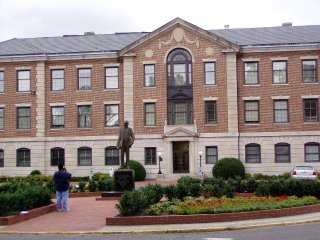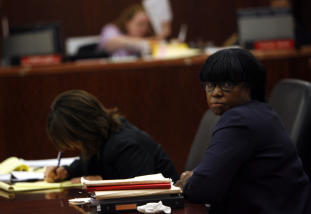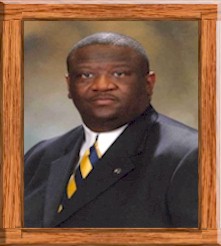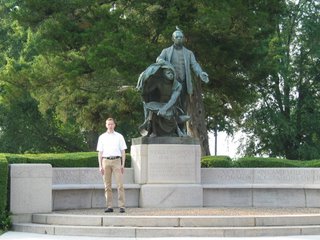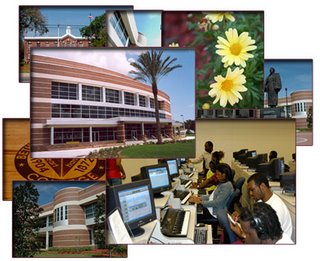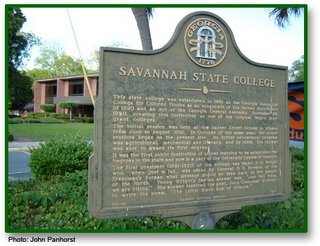
Brittany Blunt said she had several criteria in mind when she contemplated her college choice before graduating high school.
“I wanted to make sure the school (she chose) had a good chemistry program, a family environment and I wanted to stay in Georgia and keep HOPE,” Blunt said.
She said she already knew she wanted to attend an HBCU, after being influenced by her parents who are both graduates of black colleges.
“My parents said if I wanted to experience culture and be in a family environment and if I wanted to mature as a black person, I had to come to an HBCU,” she said.
Blunt, now a 20-year-old junior chemistry major at Albany State, said chose ASU because of its beautiful and friendly campus.
She is one of the students that help ASU stay on top of enrollment. Unlike other HBCU’s across the U.S., ASU is not experiencing a decline in enrollment.
Dr. Timothy Knowles, vice president for Student Affairs, said the vision of ASU President Everett Freeman, quality teachers and academic departments and the school’s reputation has helped enrollment.
Dr. Ellis Sykes, vice president for Academic Affairs, said good leadership, faculty and staff contribute to ASU’s increased enrollment. He also said he credits the flood of 1994, saying it was a blessing in disguise.
Sykes said the funds received to replace and remodel buildings damaged from the flood helped the school become more attractive in students’ eyes.
In 2001, enrollment was down 2 percent with 3,456 students enrollment for fall semester. That trend changed for fall semester 2002. In 2002, enrollment increased 2.9 percent with 3,557 students, and up 3.5 percent in 2003 with 3,681 students.
But in 2004, enrollment decreased 0.4 percent with 3,668 students and continued in 2005 with 0.5 percent and 3,649 students enrolled.
ASU experienced a large increase of 5.3 percent in Fall 2006. As of Sept. 18, 3,844 students were enrolled at ASU.
However, other HBCUs have not had the same fortune.
Despite a rise in overall attendance, the number of college eligible Black students who attend HBCUs has dropped from 18.4 percent to 12.9 percent over the past thirty years. Between 1995 and 2004, 26 of 87 HBCUs profiled by the United States Education Department experienced declines in enrollment.
The percentage of college-eligible black students who choose to attend an HBCU fell from 18.4 percent in 1976 to 12.9 percent in 2001, according to a CNN report.
Experts say the reasons for the declining interest in HBCUs include aging campuses, dwindling prestige, changes in what black students value, and increasing competition from white educational powerhouses.
Fort Valley State University in Fort Valley, Ga. and Savannah State University in Savannah, Ga. are HBCUs under the University System of Georgia that are having enrollment decline.
In Fall 1998, Fort Valley had an enrollment of 3,024 students. By the following year, it decreased almost six percent to 2,847 students. From 2000-2005, Fort Valley’s enrollment decreased consistently every semester.
For Fall 2005, Fort Valley enrolled 2,174 students.
Blunt, who toured Fort Valley’s campus, said she decided not to attend Fort Valley mainly because of the attitudes of the students. She said the students who gave her a tour of the campus were not impressive.
“It was unpleasant. Fort Valley was ghetto-looking and it was unorganized. Even my family was not impressed,” she said.
Savannah State University in Savannah, Ga. has a different enrollment history than Fort Valley.
Instead of decreasing steadily every semester, Savannah State has seen fluctuations in enrollment.
Between 1996-98, Savannah’s enrollment decreased. In 1999, the school enrolled 2,153 students. From 1999, Savannah State’s enrollment continued to increase and at fall semester 2005, its enrollment increased nearly 44 percent with 3,091 enrolled students.
Many HBCU admission offices realize the decline in HBCU enrollment, and have developed different recruiting strategies to counter the enrollment depletion.
One way ASU is attracting more students is through aggressive recruitment at high schools outside of southwest Georgia and even out of state. At one point ASU sent recruiters to Florida, but later stopped once out-of-state fees became too costly for students who were not Georgia residents.
Dr. Knowles said part of ASU’s success in recruiting comes from realizing students have several options in choosing a college or university.
“We know we are competing. We never assume all blacks will come to HBCUs,” he said.
Competition between HBCUs and predominately white colleges and universities is a great factor in HBCU enrollment declining, with schools like Harvard University offering full four-year scholarships to minorities.
By the 1980s, African-Americans were enrolled in record numbers at predominantly white institutions of higher education, leaving historically black colleges and universities (HBCU) struggling with tough economic times and declining student enrollments.
In August of 2006, University of Maryland Eastern Shore (UMES) enrolled 4,130 students, up from 3,166 students in 1996, a hike that put the university above the 4,000-pupil mark for the first time in its 120-year existence, said Suzanne Street, university spokeswoman.
Black students make up 77.4 percent of enrollment at the Princess Anne, Md., campus, while foreign students account for 88.7 percent and whites, 11.3 percent, she said.
And with middle-class black parents being able to devote more of their income to their child’s college education, more prospective college students find themselves not obligated to attend an HBCU, unlike their parents and grandparents.
Many HBCU recruiters have chosen to focus on non-black potential students to not only increase enrollment, but to diversify the campus.
Several HBCUs like, Central State University in Ohio, Hampton University in Virginia, Delaware State University in Delaware and ASU have adopted the strategy of recruiting non-black students.
